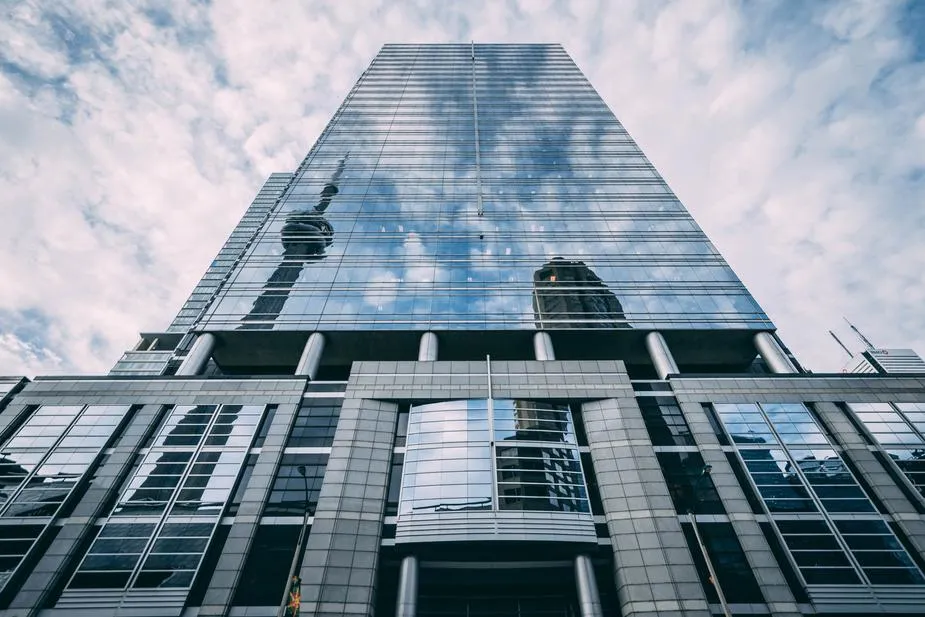
When Brian Wilson asked “what good is the dawn that grows into day?”, he probably wasn’t thinking about solar control window film. But in an odd way, the question applies—literally—to this uniquely advanced method to create energy efficiency, comfort, privacy, and protection in contemporary office buildings, highrises, and commercial properties.
When you think about it, a highrise, a big office building, or a large commercial property is kind of like a gigantic solar panel. By simply applying the latest solar window film to all the glass and windows in a building, you’ve created an energy-efficient ecosystem, with the ability to absorb or reflect the sun’s heat and penetrating solar rays throughout the year.
A brief history of solar window film
The original patent for solar window film dates all the way back to 1966. Since then, window film in general and solar window film, in particular, has gone through a series of evolutions and engineering advancements. While the original films were little more than tint, modern solar window films now bring a whole new set of features to the table, benefitting contractors, architects, planners, building managers, occupants, and tenants.
Let’s examine the primary benefits of solar control window film, including:
- Cost savings through energy efficiency
- Occupant comfort
- Fade protection
- Privacy and aesthetics
- Glare reduction
Current multi-function window films like those in the 3M™ Safety & Security Window Film Solar Safety Series also include features like blast and intrusion protection.
Cost savings through energy efficiency
Solar control window film creates energy efficiency —and savings on heating and cooling costs —by managing the transmission of ultraviolet (UV) radiation, far- and near-infrared (IR), and visible light from the sun. By turning away the sun’s powerful rays, building managers and property owners can eliminate hotspots within a building, and insulate windows and glass from heat loss.
Of the solar heat entering a building, more than half is infrared light, yet over 40% is in the visible light range. Conventional window films lower both to provide good sun control performance. However, there are “wavelength-selective” films now available that are designed to block specific regions of the solar light spectrum, from infrared to ultraviolet. These films can be virtually clear, rejecting a very high percentage of IR while still allowing a very high percentage of natural daylight into the interior of the building.
By the numbers
In fact, modern solar control window films deliver up to 99.9% rejection of UV rays up to 97% infrared energy rejection.
Windows account for a major portion of cooling loads in any building. Across buildings in the U.S., 42% of the entire cooling load for residential buildings and 28% of the entire cooling load for commercial buildings are due to windows.*
Solar control window films save up to:
- 19 kWh/ft2 on a single pane
- 12 kWh/ft2 on a double pane
One final number: solar control window films can become carbon negative in as short as 6 months.
Occupant comfort
While energy savings is certainly important, another major benefit and factor in purchasing decisions for solar window films is occupant comfort. Solar control window films can reduce temperatures, hot and cold spots, as well as UV radiation (one of the leading causes of skin cancer).
Simply put, solar window films allow the sunny side of your building to be cooler. That means people are more comfortable, as one side of the building becomes overheated while the other is too cool.
The second most common concern in terms of occupant comfort that relates to windows is glare. And the most common approach to dealing with glare is by installing blinds or drapes.
However, blinds and drapes more often than not completely eliminate natural light, or create a patchwork dappling on the interior that can be distracting or aesthetically displeasing. And it’s safe to say blinds and drapes do next to nothing in terms of enhancing the insulative qualities of windows, not to mention windows’ energy efficiency.
Solar window films can also be used to address glare. Rather than obstructing the view, the right window film can optimize the transmission of light through a window best suited for each unique situation. A building with virtually clear solar window film can transmit as little as 9% of the visible light, should that best fit the room or interior space.
Fade protection
One big concern for business owners and managers of commercial properties is the fading that can occur when objects are placed in the path of direct sunlight within the interior of a building. As a general rule, ultraviolet light is responsible for approximately 40% of the fading, visible light about 25% and solar heat about 25%. The remaining 10% can be attributed to humidity, pollutants, interior lights, dye anchorage, and more.
Solar control window films will typically reject 99% of the UV radiation, and depending on the film chosen, it can reject as much as 79% of solar heat, as well as 91% of visible light. Clearly, installing window film has a significant impact on the rate at which fading occurs.
Interior furnishings and property are particularly vulnerable to UV light, visible light, and solar heat that penetrates a building’s windows and glass. And though solar window film can’t stop fading altogether, it can be very effective in mitigating and delaying fading, prolonging the life of furnishings and property.
Privacy and aesthetics
Think of your building as a massive shell. Some shells look distinct and polished, some blend into the surrounding environment, some stick out like a sore thumb. The choice you make in solar window film has a great impact on the exterior look, aesthetic appeal, and privacy of the building itself. Fortunately, there are an abundance of designs, patterns, and privacy levels you can choose from in solar window film to deliver the aesthetic appeal and privacy level you want for both occupants and passersby.
Another part of the aesthetic equation includes reflectivity and transmission. Older, outdated window films often harshly reflected light, which created a real disruption for people traveling near or around the building. With modern solar window films, reflectivity can be entirely eliminated, and decorative touches like frosting or shading can offer a unique look and a specific level of privacy. In fact, the latest multi-optical layer film technologies such as those found in the
3M™ Sun Control Window Film Prestige Series have no metals and thus are 5G safe — as well as non-corrosive and non-reflective.
Solar window films can improve exterior aesthetics by providing a uniform, polished look to the building facade. Buildings with reflective-type window film look updated and contemporary. An updated facility also makes occupants and tenants visually aware of the efforts being made to maintain a high aesthetic level and current, modern look.
Here comes the sun
Solar window film offers so much more today than in its original 1966 inception. And if The Beach Boys were tapped to write a jingle for solar film today, they’d have a plethora of themes to explore.
Take a deep dive into solar control window film with NGS’ James Beale in this webinar.
* Source: “Buildings in the 21st Century,” US Department of Energy, International Green Building Summit, 2010.
Photo by Bruno Passos from Burst


